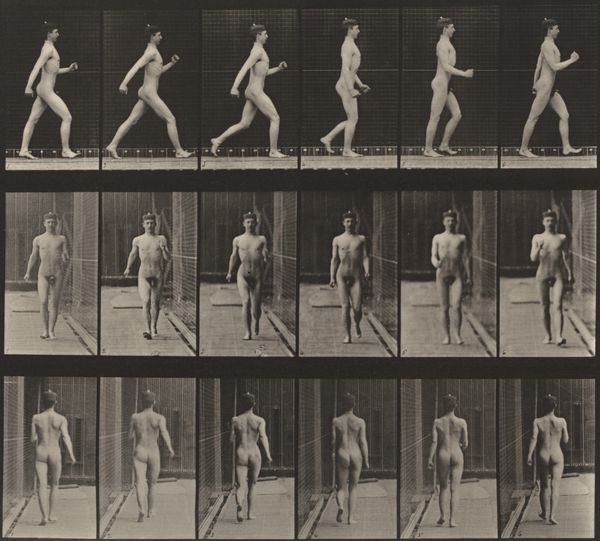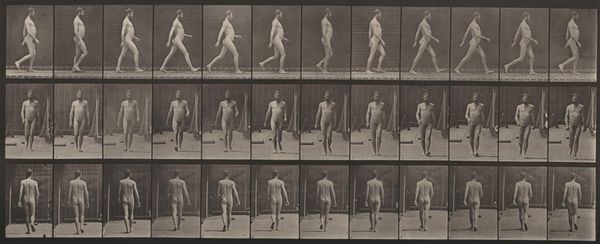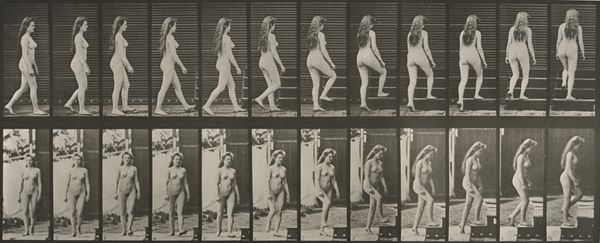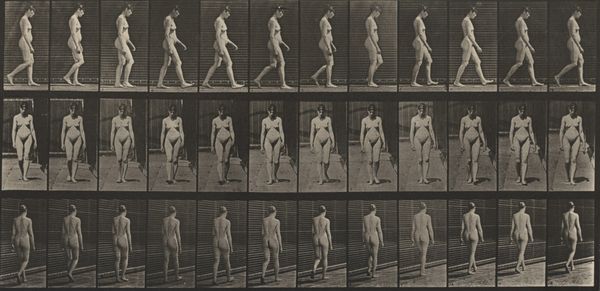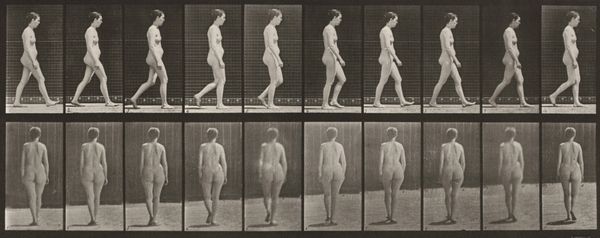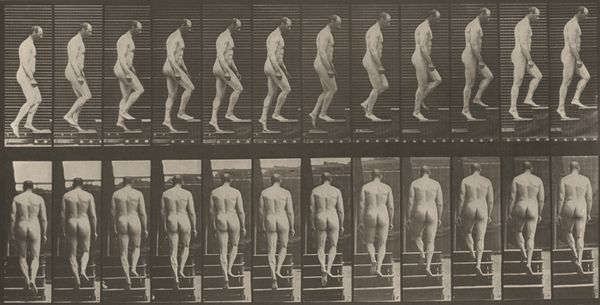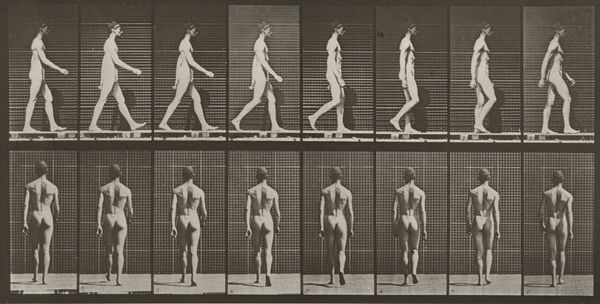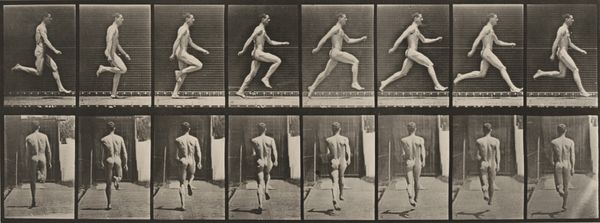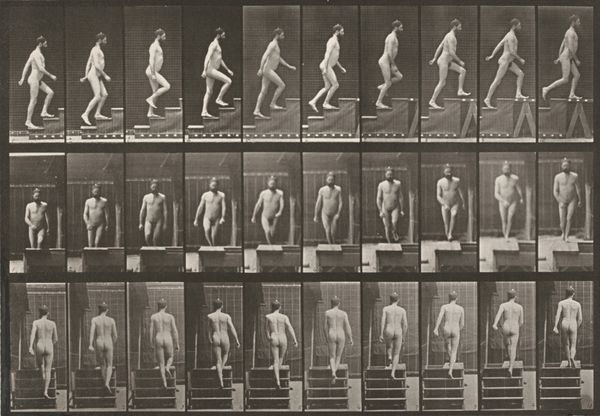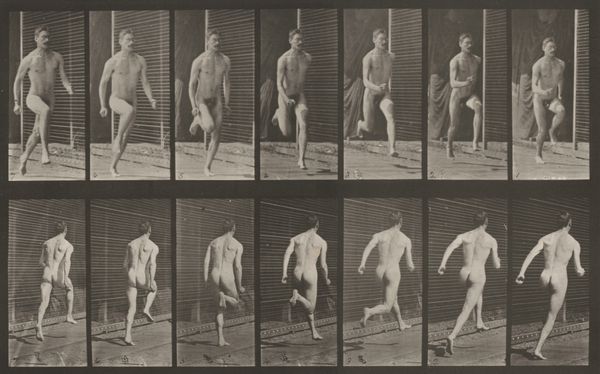
print, photography, gelatin-silver-print
#
kinetic-art
# print
#
impressionism
#
figuration
#
photography
#
gelatin-silver-print
#
nude
Dimensions: image: 16.2 × 42.6 cm (6 3/8 × 16 3/4 in.) sheet: 47.55 × 60.2 cm (18 3/4 × 23 11/16 in.)
Copyright: National Gallery of Art: CC0 1.0
Curator: This is Plate Number 113, "Descending an Incline," a gelatin-silver print by Eadweard Muybridge, created in 1887. Editor: My first impression is one of clinical precision; it's almost like looking at an anatomical study rather than a piece of art. There's a starkness, despite the organic form. Curator: That's a valid point. Muybridge was driven by scientific inquiry, particularly his desire to capture motion with the newly-available technology of photography. Think about the grid format and how each frame freezes a moment in time; he was dissecting movement into its constituent parts, much like a scientist dissecting a specimen. This went beyond artistry to become a valuable research tool. Editor: Exactly, it brings to light how social needs influenced technology and vice versa, because earlier attempts to understand motion in art and science struggled to capture what photography could. But what was the process? The sequential photoshoots required the model to pose with painstaking care. He constructed specialized equipment, an elaborate series of cameras triggered in rapid succession. That shows a deep interest in materials, tools, labor, and how to capture "accurate" motion in that historical moment. Curator: The socio-political element is the context. This print was a product of its time, part of a larger project supported by the University of Pennsylvania. These photographs helped solidify Muybridge's place in academic circles and influenced the scientific understanding of human and animal locomotion. They also sparked the development of motion pictures. Museums began exhibiting his sequences, cementing his status in the history of photography and the emerging art of cinema. Editor: What stands out to me is the sheer physical work embodied in these images. The model walking again and again, the setup of the photography studio—this isn't just about high art. We should also view this as part of a historical understanding of work and materiality. He employed methods for seriality that anticipate industrialization. Curator: A fitting point to reflect on: it is interesting how "Descending an Incline" operates within institutional structures while pioneering art techniques, pushing viewers to question conventional beliefs about motion, scientific data, and artistic boundaries. Editor: Absolutely, examining its meticulous materiality challenges the boundaries between photographic recording and art itself. It all invites us to contemplate Muybridge’s legacy as a figure bridging the space between scientific inquiry and art.
Comments
No comments
Be the first to comment and join the conversation on the ultimate creative platform.
